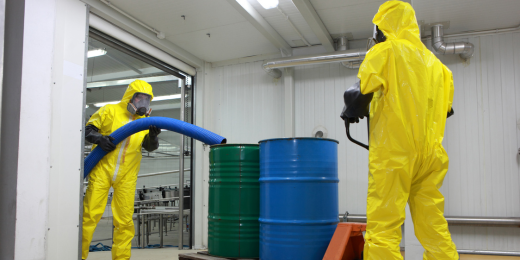The Reclaim Waste Ideas
The Reclaim Waste Ideas
Blog Article
The Ultimate Guide To Reclaim Waste
Table of ContentsNot known Incorrect Statements About Reclaim Waste Our Reclaim Waste PDFsReclaim Waste Things To Know Before You Get ThisThe smart Trick of Reclaim Waste That Nobody is DiscussingReclaim Waste for Beginners
Explore the kinds, incidents, and forms of liquid waste. Residential sewage waste refers to the waste and items from a residential septic system. This kind of waste is developed by humans in residences, schools, and various other structures. This only consists of septic systems that have a drainpipe area. The correct management and disposal of domestic sewage waste need liquid waste to be moved to a sewage treatment plant where the correct techniques and tools are applied to detoxify and deal with waste.
Industrial waste often includes possible risks, such as combustible products or a mix of fluid and strong waste products, and requires an advanced and comprehensive disposal process. The disposal of business waste typically involves the filtering of waste prior to transport to ensure safe and appropriate disposal. Hazardous waste is developed from byproducts and runoff of commercial procedures and manufacturing.
This kind of waste can not utilize the very same sewer monitoring transport or procedures as septic or commercial liquids. The hazardous waste management process needs the examination and screening of fluid waste prior to it undertakes the disposal procedure (liquid waste removal melbourne). Overflow waste is the liquid waste that comes from runoff and excess stormwater in highly populated areas or cities
Runoff waste can cause contamination and flooding if not handled correctly. Discover more about sewer cleansing and waste monitoring. Ensuring correct waste monitoring can protect against calamities and minimize environmental harm. Both people in household setups and specialists in industrial or manufacturing industries can benefit from recognizing the procedures and policies of fluid waste monitoring.
Not known Facts About Reclaim Waste
Contact PROS Solutions today to learn more about our waste management and disposal solutions and the correct methods to look after the fluid waste you produce.
(https://justpaste.it/fauht)This so-called 'wastewater' is not just an essential source yet, after treatment, will be released to our land, rivers or the ocean. Utilized water from commodes, showers, bathrooms, kitchen sinks, washings and industrial procedures is known as wastewater.

water utilized to cool machinery or tidy plant and equipment). Stormwater, a kind of wastewater, is runoff that flows from agricultural and metropolitan locations such as roofings, parks, yards, roadways, paths and gutters into stormwater drains, after rain. Stormwater streams untreated straight to neighborhood creeks or rivers, eventually reaching the sea.
All About Reclaim Waste
In Queensland, many wastewater is treated at sewer therapy plants. Wastewater is moved from residential or commercial sites through a system of sewage systems and pump terminals, understood as sewerage reticulation, to a sewer therapy plant.
The Department of Natural Resources recommends city governments concerning managing, operating and maintaining sewerage systems and therapy plants. In unsewered locations, regional governments might need householders to mount private or home sewage therapy systems to treat residential wastewater from bathrooms, kitchen areas, restrooms and washings. The Division of Natural Resources authorises making use of family systems when they are shown to be effective.
Most stormwater gets no treatment. In some brand-new neighborhoods, therapy of some stormwater to eliminate litter, sand and crushed rock has started using gross toxin traps. Wastewater therapy happens in four stages: Removes strong matter. Larger solids, such as plastics and various other items wrongly discharged to sewage systems, are eliminated when wastewater is travelled through displays.
Wastewater after that streams right into additional reading large tanks where solids clear up and are gotten rid of as sludge. Grease and residue are skimmed from the surface. Utilizes tiny living microorganisms understands as micro-organisms to damage down and remove staying liquified wastes and fine bits. Micro-organisms and wastes are included in the sludge. Removes nitrogen and phosphorus nutrients that could trigger algal blossoms in our rivers and threaten water life.
Not known Factual Statements About Reclaim Waste
Nutrient removal is not offered at all sewer treatment plants because it calls for pricey specialised tools. Clear liquid effluent created after treatment may still include disease-causing micro-organisms - liquid waste removal melbourne.

Most wastewater streams into the sewage system. Under the Act, local federal governments administer authorizations and licences for eco relevant tasks (ERAs) including wastewater launches that might have a neighborhood impact.
The 30-Second Trick For Reclaim Waste
Tracking offers accurate info regarding water high quality and can verify that licence conditions are being satisfied. The info acquired with tracking supplies the basis for making water high quality decisions.
Report this page